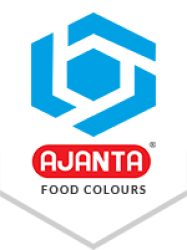Argentina, or the Argentine Republic, is a culturally rich and picturesque nation. Most people around the world also know Argentina for its delightful cuisines. Covering an area of 2,780,400 sq km, Argentina is the second largest nation in South America after Brazil, the fourth largest in the Americas and the eighth largest in the world. The country shares its borders with Chile to the west, Bolivia and Paraguay to the north, Brazil to the northeast, Uruguay and the South Atlantic Ocean to the east and the Drake Passage to the south.
Argentina’s economy is very strong and diverse, various industries play crucial roles in it including manufacturing, pharmaceuticals, hospitality, and agriculture. In order to manufacture any item whether it is food or a cosmetic, there are many factors that contribute to the manufacturing, marketing and the appearance of the item, among these one of the most factors is colours. It gives the final product an attractive look which is appealing to the consumers and helps in increasing the sales and the recognition of the product and brand in the market.
Argentina manufactures colours for use in products but it is not sufficient to fulfill all the colours related demands of the country. For that Argentina imports colours from other countries as well. Some of the well-known countries that export colours to Argentina include India, Brazil and the United States of America.
Argentinan Industries Where Colours Play a Vital Role
In Argentina, manufacturers use colours in various manufacturing industries to make products appealing and attractive for consumers which helps in product sales. Here are some industries where colours play a crucial role in Argentina include:
Food and Beverage Industry
In Argentina’s food and beverages manufacturing industry colours play a crucial role by making the products appealing and attractive for consumers. However, manufacturers of food and beverage products in Argentina face various challenges in selecting the right colour for their products. Manufacturers want stable and premium colours that do not fade or change on products over time, making the product looks new. Argentina’s food and beverage manufacturing can overcome its challenges by using synthetic food colours in its products. These colours come in different vibrant colour shades that give an appealing look to products and do not fade or change on products during manufacturing and storage of the products. In Argentina many colour suppliers, merchants, and distributors, import colours from other countries at low prices and sell them in Argentina at high prices and make a profit on each sale. Some of them sell the colour under the same brand name from they bought colour, while others create their own labells and sell under their own branding. Most of the food and beverage manufacturing industry of Argentina is located near big cities such as Buenos Aires, Rosario, Córdoba, and Mar del Plata. According to Statista, the revenue of Argentina’s food market in 2024 is US$56.56 billion and it is expected to grow annually by 10.29% (CAGR 2024-2029).
Cosmetics Industry
Colours play an important role in Argentina’s cosmetics and personal care products. It gives an appealing and fun look to a range of products including lipstick, eyelashes, mascaras, foundations, blushers, body lotions, and soaps. Still, manufacturers often face some challenges in selecting the right colour for their products. They want premium quality colours that give a vibrant and attractive look to their products and do not fade over time. Synthetic food-grade colours can overcome these challenges of Argentina’s cosmetics manufacturers as these colours come in various colour shades that give stability and consistency to products. These different colour shades help manufacturers to create unique coloured products that also help in product recognition in the market and ultimately boost product sales. Most of Argentina's cosmetics and personal care manufacturing industries are located in Buenos Aires, Córdoba, and Mar del Plata. As reported by Statista, the beauty and personal care market revenue in Argentina stood at $5.78 billion for the year 2024. There are expectations for steady growth of 3.87% annually for the period running from 2024 to 2029.
Pharmaceuticals Industry
In the pharmaceutical sector of Argentina, colours are vital for numerous reasons. It makes medicines such as tablets, capsules, syrups, health supplements, etc., visually appealing which helps in the identification of medicines for both patients and pharmacists and reduces the chances of taking the wrong medicines. These appealing medicines also helps in create brand recognition in the market. However, pharmaceutical manufacturers of Argentina often face some challenges in selecting the right colour for their products. They want colours that give stability and consistency to medicines and do not spoil. Manufacturers can overcome these challenges by using synthetic food-grade colours in their medicines, as these colours come in various colours that give the best stability and consistency to medicines in every condition. Buenos Aires, La Plata, Mendoza City and Cordoba are some of the major pharmaceutical manufacturing hubs of Argentina. According to Statista, revenue for the pharmaceutical sector in Argentina recorded $4.31 billion dollars in 2024, and with an annual growth rate of 3.2% is likely to hit $5.05 in 2029.
Chocolate Industry
Colour is an important part of chocolates. It makes the chocolate appealing and fun for consumers that attract their attention and boosts sales. Still, manufacturers in Argentina often face challenges in selecting the right colour for chocolate. They want stable colours that give a premium look to their chocolates and are safe for human consumption. Argentina’s chocolate manufacturers can overcome these challenges by using synthetic food colours in their chocolate products. Synthetic food colours come in different vibrant colour shades that do not fade over time and make the chocolate new for a long time. Synthetic food colours are approved from various governmental bodies around the world such as the FDA, ESSAI, and FSSAI Most of the chocolate manufacturing industries of Argentina are located near cities like Buenos Aires, San Fernando, Villa María, Rosario, and Mendoza. Statista indicates that the confectionery market in Argentina reached a value of $5.11 billion dollars in the year 2024. From the present-day outlook, it is assumed that the market would have a growth rate of about 7.98 over the period 2024 - 2029.
Animal Feed Industry
Colours also play a crucial role in the field of the animal feed manufacturing industry. Colours make the feed appealing for animals which encourages them to feed properly and stay healthy. It also helps in differentiating the various feeds such as for poultry, swine, or cattle. However, manufacturers of animal food in Argentina often face some challenges in selecting the right colour for their animal food products. Manufacturers want stable and high-quality food colours in Argentina for their animal food products that give an appealing look to feed and do not fade over time. In this, synthetic food colour can be the best option to overcome all the colour-related challenges of manufacturers. These colours provide an appealing final look to products and don’t change or dull over time. Most of Argentina's pet food manufacturing industries are situated in cities within provinces that also have a strong presence of animal feed manufacturing industries, including Buenos Aires, Córdoba, and Santa Fe.
Cultural Preferences of Colours in Argentina
Manufacturers in Argentina use those colours strategically in their products to capture the local market and boost product sales. For example, in Argentina, red and yellow colours are often associated with energy and excitement which makes them an ideal choice for food and beverage products. In chocolate products, warm and rich browns are frequently chosen to signify indulgence or luxury perceptions. On the other hand, cosmetics and personal care products require vibrant colour ranges depending on trends among friends about what is considered beautiful. Manufacturers are very mindful of cultural tastes. They use synthetic colours to make products more appealing and attractive.
Regulatory Guidelines on Colours in the Argentinian Market
In Argentina, the National Administration of Drugs, Foods, and Medical Devices (ANMAT) is the official governmental body that checks the quality and safety of colourants for human consumption in products and gives the approval to sell them in the market. ANMAT ensures the quality of colours by conducting inspections, sampling, testing, and enforcement actions. It also verifies that products comply with the Acceptable Daily Intake (ADI) standards on a regular basis.
Starting a new business in Argentina is also a challenging task. Startups have to compete with the companies that have already captured the market and are selling their products. Startups can overcome their problems by making their product different and appealing from their competitors. These different coloured products help in the recognition of products and their vibrant colour attracts consumers’ attention which leads to product sales. For that, synthetic food colour can be the best option because these colours have come in various shades that give consistency and stability to products and it is an affordable option that helps startups to sell their product at competitive prices.
If you are a manufacturer or startup business in Argentina and looking for high-quality synthetic food colour for your products, so you can consider Ajanta Food Colours, a leading synthetic food colours manufacturing company with over 75 years of legacy in the field. The company offers a wide range of synthetic food colours as well as food-grade colours for some non-food applications such as cosmetics and pharmaceuticals. For the quality of their colourants and client satisfaction, Ajanta received various awards and certificates from the Indian governmental bodies as well as from the countries where Ajanta exports its high-quality food colours.
Some of the awards and certificates received by Ajanta Food Colours include the Arch of Europe Award, the Bureau of Indian Standards (BIS) Award, certifications from the Food Safety and Standards Authority of India (FSSAI), the US Food and Drug Administration (US FDA), as well as Halal, Alcumus ISOQAR, Star-K Kosher, Food Safety System 22000 (FSSC 22000), and ISOQAR certifications, among others. These awards and certificates show Ajanta’s expertise and legacy in the field of synthetic food colours manufacturing industry.





_1738146822.jpg)